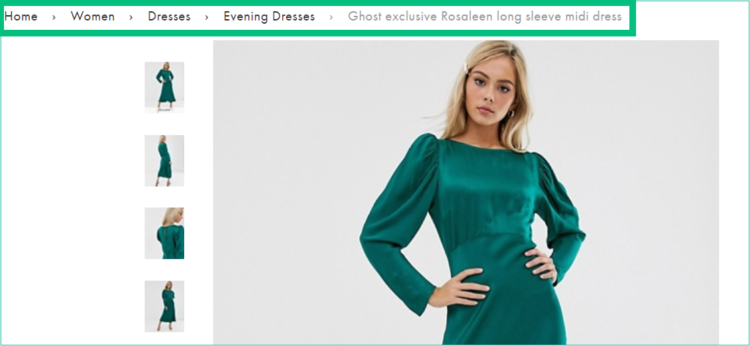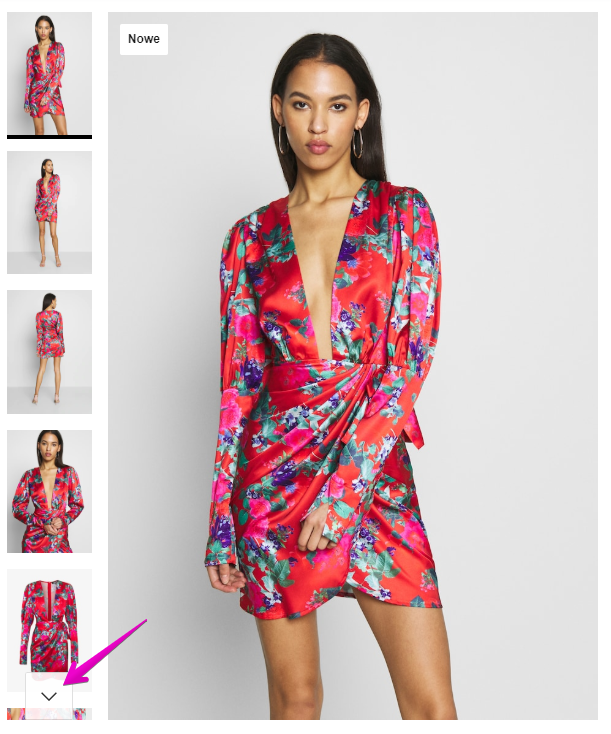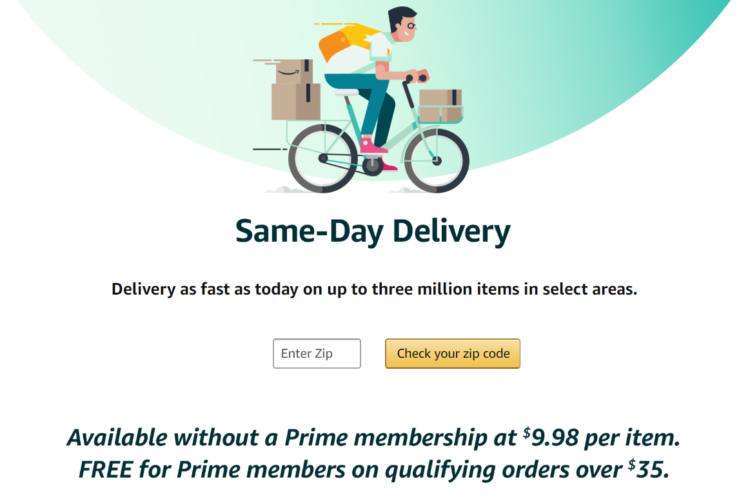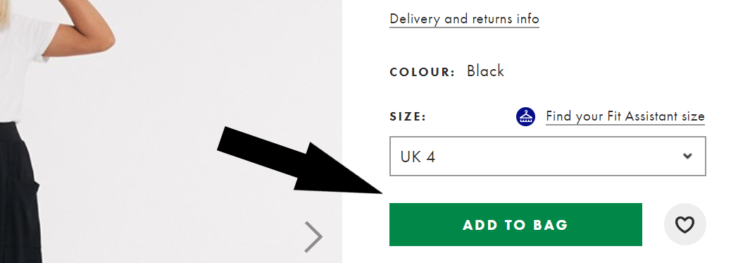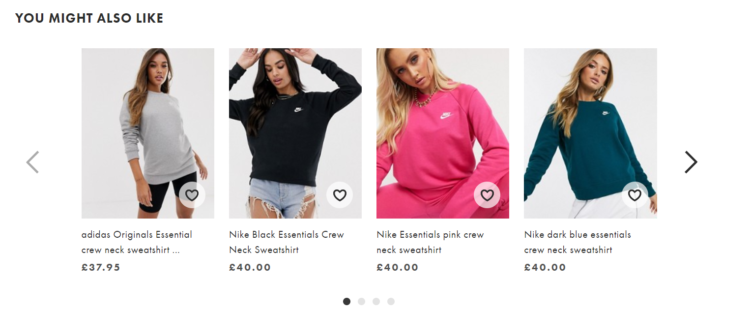How to Write Attractive Product Specifications?

When it comes to e-commerce, a properly written product specification is one of many website elements that affect the customer decision-making process and may encourage them to shop in your e-store. So how to create specifications that will help users to choose and you to sell? Keep reading our today’s entry!
If you’re an owner of an e-commerce business, you’ll certainly support the statement that information about users ordering and paying for your products is much more desirable than data concerning adding goods to shopping carts. Your objective is to encourage users to make a purchase. But how to do it? With properly written product specifications, you’ll be able to assist customers throughout the whole purchasing process.
It needs to be remembered that the e-commerce industry is governed by its own principles and rules. In brick and mortar stores, customers are able to touch, smell or try on your products, however, in the online world, they need to settle for documents describing the assets of products they see on their screens. And that’s why it’s very important to ensure that product specifications on your site resolve any doubts, meet users’ expectations and are a sufficient incentive for purchase.
In today’s entry, we’ll focus on discussing the basic constituents of product specifications and tricks that will allow you to create impeccable documents.
Let’s set the ball rolling!
Quality e-commerce product specification – what should it be like?
According to the very popular AIDA model, your product specification should affect customers by:
- Attracting their attention,
- Intriguing them,
- Arousing their desire to buy your products,
- Motivating them to take action.
Following these principles allows coming to some conclusions. So what should your product specification be like? If your product specification is supposed to draw users’ attention, it needs to be aesthetically appealing. If it’s supposed to intrigue, it should be intuitive and full of useful information. If you want to arouse potential customers’ desire, you need to present your products propitiously and attractively. If you wish to motivate users to take action, you need to mention elements that make the purchasing process efficient. And although it seems to be as plain as the nose on your face, it turns out that many people aren’t capable of employing all these rules.
However, before we start discussing the individual elements of product specifications, let’s talk briefly about a few issues that are also worth keeping in mind.
First of all, remember that an increasing number of users shop online via mobile devices. That’s why responsive web design and mobile versions of your product specifications are a must. Check whether all important elements that are displayed above the fold on desktop devices look equally good on smartphones or tablets.
A breadcrumb navigation is another relevant element. The fact that users check out specific products doesn’t mean that they’re willing to buy them. Sometimes product specifications are simply the first subpages that customers are redirected to from the search engine. Therefore, you should think about breadcrumbs to make it easier for your potential buyers to navigate through the entire product range offered in your e-store.
Below you can see an example of the breadcrumb navigation at ASOS online store.
And last but not least, your product specifications should evoke positive feelings. Check whether they’re consistent, whether the most important elements are bolded or whether fonts, colors and sizes are applied properly. Try to analyze your product specification from a customer’s point of view and think whether its structure would encourage you to purchase.
Now we can move on to discussing more detailed constituents. Let’s take a closer look at individual items that are must-have components of every quality product specification.
Product name
This is probably the most obvious element of the document. Make sure that customers know exactly what items they’re dealing with. Names like “sports shoes” may not be enough so go for long-tail phrases.
See product names used on the ASOS website.
Only by looking at this short text, you learn what’s the brand, product type and model name. If you try to search for these specific shoes in the search engine, you’ll effortlessly find the ASOS’s subpage. And that’s the purpose of creating product specifications.
Price
In most cases, this is the first element that users look for after entering the product specification. Let’s be honest, price is one of the most important decision-making factors. Make sure that users don’t need to browse your entire website to find prices of products that are of interest to them.
Make the price conspicuous and place it in a visible part of the product specification. If a given product is currently on sale, let customers know about it and don’t remove the regular price. Keep everything transparent and organized.
Photos
Without a shadow of a doubt, one photo won’t suffice. Product specifications are supposed to somehow make it up for customers that they can’t check out the goods like in brick and mortar stores.
Therefore, product photos should be diverse and top quality so that they show your goods from each side in an attractive way. If you offer shoes or clothes, show them on real persons. This will allow users to see how they could look wearing specific items.
In the case of the clothing industry, we can often come across a magnifying glass function that allows users to enlarge given parts of the product photo. This way, visitors can thoroughly check the quality of the workmanship and imagine how they would feel wearing specific fabrics.
Posting a video presenting a given product has become a very popular method applied by an increasing number of e-commerce shops. Such a solution allows you to immediately attract customers’ attention.
Description
A proper product description should serve mostly informative functions. In this part, users want to learn about the product and you need to give them the possibility to do it. Keep your texts unique and concise but at the same time comprehensive. Instead of writing lengthy essays, bullet points the most relevant pieces of information and create aesthetically pleasing layouts.
However, remember about selling value and users’ emotions. After all, apart from informing customers about your offer, product descriptions are also supposed to encourage them to make a purchase.
Necessary information
These pieces of information aren’t a part of a product description, however, they play a very important role during the decision making process. Provide data concerning availability of the product, its color or taste variants, delivery time, payment methods or return policy in a visible place.
A useful tip: very often shops use phrases like “delivery in 24 hours”, however, it’s much better to go for specific announcements such as “buy today and collect the package on Thursday” or “same-day delivery”. This is the method applied by Amazon, one of the most potent online selling platforms:
Obviously, we haven’t mentioned all crucial data that should be a part of your product specification, but it’s worth pointing out that the messages you use often depend on the industry in which you operate. If you run a clothing e-store, then your product specifications will probably include information about the fabrics. On the other hand, in the case of the food industry, it might be a good idea to publish tips concerning product preparation.
CTA
At this point, users can usually encounter buttons with clear information such as “add to the shopping cart”, “order now”, “buy” or “buy now!”. However, choosing suitable keywords may not be enough. In the case of Call to Action, you need to remember a few important aspects.
- First of all, place the buttons in a visible place, preferably above the fold, next to the photos or product name. This way, users won’t miss it.
- Make sure that the button is easily noticeable thanks to its size, color and content. Don’t let it get lost among other information.
- If your product specification is long and users need to scroll through it, consider implementing a mobile CTR.
- Check whether (and how) the button responds when you move the cursor over it. Do you feel encouraged to click?
Reviews
This is the last very important element. It has a huge impact on conversion. Well, it shouldn’t surprise anyone – most of us decide to make a purchase only after checking reviews and ratings of products first.
You can implement stars or reviews, or preferably both. It’s also worth highlighting the most flattering reviews. Avoid deleting negative comments, respond to them politely and try to benefit from the situation by showing that you’re able to cope with stressful incidents. Deleting negative reviews or publishing fake ones can only worsen your brand image and this is something you certainly want to avoid.
It’s all about details – how to create unblemished product specifications?
If you’ve already ensured that all basic product specification elements are fine, it’s time to focus on details. Although these items aren’t must-haves and you can certainly be successful without them, it’s worth taking them into consideration to catch up with your competition.
- Favorite products, usually marked with a heart icon. Just with one click customers can mark items they really like, move them to “a wishlist” and save. Thanks to it, later they’re able to come back to specific products without having to scroll the entire offer again.
- Questions. Even if it seems to you that your product description includes all necessary data about the item, there will always be a person willing to ask one more question. Think about adding chat to your website or providing a contact form that will enable potential customers to ask you additional questions that bother them.
- “You may also like these products”, meaning simply complementary goods. You’ve certainly experienced many situations when you wanted to pay for shoes or other products and the salesperson offered you buying additional, equally necessary products such as a suede cleaner. It’s just an example but we hope that you get the message ;).
- Social media. Why shouldn’t you take advantage of the fact that users eagerly show your products online? Such a form of advertising not only diversifies reviews and ratings of your products but also presents them on satisfied customers. It’s a win-win situation.
To sum up
Are you wondering whether we’ve mentioned all possible elements? Of course not! Your product specifications can include anything that works for your business. Size tables, share icons or catchy slogans like “38 people are looking at this product now” or “54 users bought this item today” – this is just the tip of the iceberg. However, if you see that some elements don’t serve their purpose, get rid of them. Too much of a good thing may turn out to be harmful, especially when you take into consideration that product specifications are supposed to be helpful, not overwhelming. Keep them clear, transparent, intuitive and user-friendly so that they lead your customers directly to the “order and pay” section.

